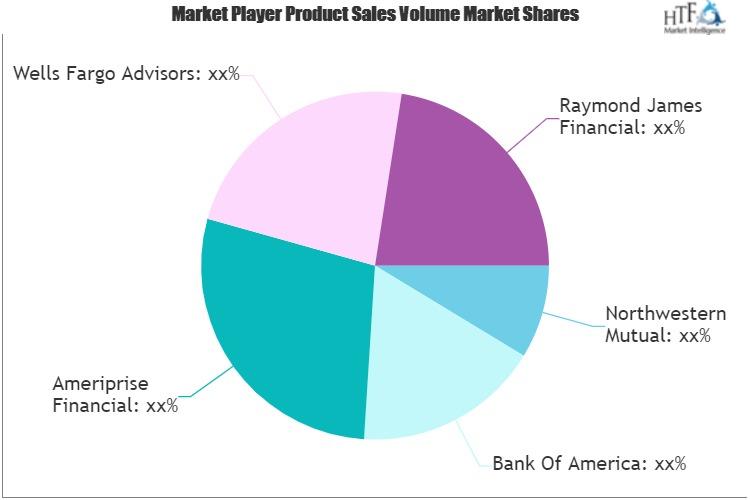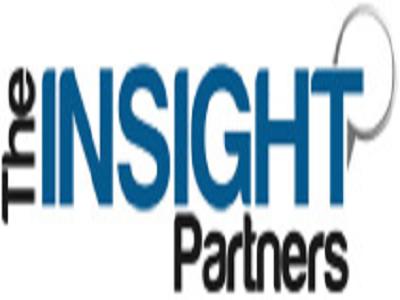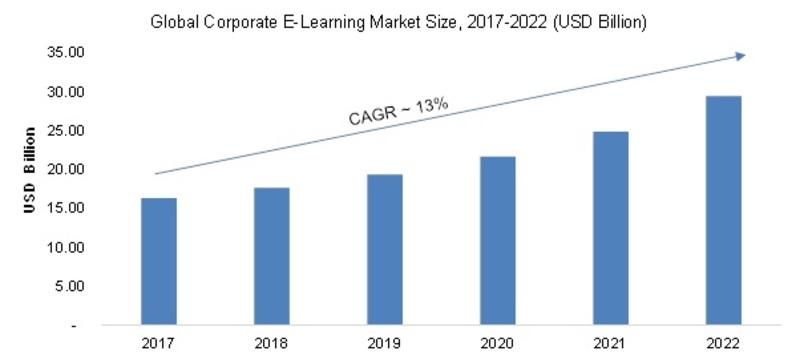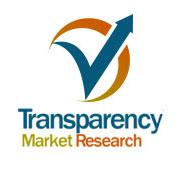Press release
Polycyclic Pigment Market Report – key Players, Industry Overview And Forecasts To 2026
The pigment industry is facing many challenges, as prices of raw materials are expected to rise in the near future. Organic and inorganic pigments differ significantly in performance and cost. Organic pigments have a wide range of properties such as strength in chroma as well as strength in tint. The primary disadvantage of organic pigments is that they are weaker in weather fastness and opacity. The pigments manufacturers are investing in manufacturing effective pigments. Hybrid pigments are one of the growing inorganic pigments in the worldwide market. Hybrid pigments provide an effective alternative for organic pigments. Hybrid pigments help bridge the gap between performance and cost without ignoring the environmental concerns.
Read Report Overview @
https://www.transparencymarketresearch.com/polycyclic-pigment-market.html
In the pigment industry, organic pigments are divided into four types: azo pigments, polycyclic pigments, lakes pigments, and others. Polycyclic pigments are also known as high-performance pigments. High performance pigments can also include certain inorganic pigments with low environmental impact. Polycyclic pigment are of the highest quality as compared to other pigments. Polycyclic pigment has the best durability and have been specialized and commoditized in terms of applications. This organic pigment is quite expensive. However, due to its improved and unique properties, demand for polycyclic pigments is increasing across the globe. The pigment industry is facing tough competition; however, demand for polycyclic pigments has been rising due to their excellent resistance properties. Polycyclic pigments include phthalocyanine pigments, quinacridone pigments, perylene pigments, and isoindolinone pigments.
Based on application, the polycyclic pigment market can be classified into automotive coatings, industrial coatings, decorative coatings, plastics, inks, and cosmetic products. Polycyclic pigments are primarily used in the coatings industry. Approximately 50% of these pigments are used in the automotive sector. Demand for polycyclic pigments has been rising in the printing industry. Plastic application is expected to witness strong growth during the forecast period. However, applications such as inks are anticipated to witness sluggish growth owing to factors such as rapid digitization in developed as well as developing regions. Implementation of stringent regulations related to food contact applications is expected to hamper market growth.
Based on geography, the global polycyclic market can be classified into Asia Pacific, Europe, North America, Latin America, and Middle East and Africa. North America and Europe are the major regions of the polycyclic pigment market. Europe is an active market in terms of strategic initiatives. Factors driving the market in the region include growth of end-use industries, amplified local manufacturing, and increase in number of domestic players in various vertical market segments. Major restraints include high price of polycyclic pigments and lack of quality control across developing countries. New product launch is the most preferred strategy adopted by key market players to sustain in the highly competitive market. There are opportunities for polycyclic manufacturers to increase the production of environmentally-friendly polycyclic pigments. Asia Pacific region is also expected to provide ample growth opportunities over the coming few years.
Request to view Sample Report:
https://www.transparencymarketresearch.com/sample/sample.php?flag=B&rep_id=42743
Major players operating in the global polycyclic market are Sun Chemical, Clariant, BASF, Ferro, Vijay Chemical Industries, Meghmani Pigments, Sudarshan Chemical Industries Ltd., Voxco Pigments and Chemicals Pvt. Ltd., Horsta Chemicals Zhuhai Co. Ltd., Heubach, DIC Corporation, Trust Chem and Eckart GmbH, Merck Performance Materials and Lansco Colors. These companies hold significant share of the market. Thus, the polycyclic pigment market experiences intense competition.
Transparency Market Research (TMR) is a global market intelligence company providing business information reports and services. The company’s exclusive blend of quantitative forecasting and trend analysis provides forward-looking insight for thousands of decision makers. TMR’s experienced team of analysts, researchers, and consultants use proprietary data sources and various tools and techniques to gather and analyze information.
TMR’s data repository is continuously updated and revised by a team of research experts so that it always reflects the latest trends and information. With extensive research and analysis capabilities, Transparency Market Research employs rigorous primary and secondary research techniques to develop distinctive data sets and research material for business reports.
Transparency Market Research
State Tower,
90 State Street,
Suite 700,
Albany NY - 12207
United States
Tel: +1-518-618-1030
USA - Canada Toll Free: 866-552-3453
Email: sales@transparencymarketresearch.com
Website: http://www.transparencymarketresearch.com
Read Report Overview @
https://www.transparencymarketresearch.com/polycyclic-pigment-market.html
In the pigment industry, organic pigments are divided into four types: azo pigments, polycyclic pigments, lakes pigments, and others. Polycyclic pigments are also known as high-performance pigments. High performance pigments can also include certain inorganic pigments with low environmental impact. Polycyclic pigment are of the highest quality as compared to other pigments. Polycyclic pigment has the best durability and have been specialized and commoditized in terms of applications. This organic pigment is quite expensive. However, due to its improved and unique properties, demand for polycyclic pigments is increasing across the globe. The pigment industry is facing tough competition; however, demand for polycyclic pigments has been rising due to their excellent resistance properties. Polycyclic pigments include phthalocyanine pigments, quinacridone pigments, perylene pigments, and isoindolinone pigments.
Based on application, the polycyclic pigment market can be classified into automotive coatings, industrial coatings, decorative coatings, plastics, inks, and cosmetic products. Polycyclic pigments are primarily used in the coatings industry. Approximately 50% of these pigments are used in the automotive sector. Demand for polycyclic pigments has been rising in the printing industry. Plastic application is expected to witness strong growth during the forecast period. However, applications such as inks are anticipated to witness sluggish growth owing to factors such as rapid digitization in developed as well as developing regions. Implementation of stringent regulations related to food contact applications is expected to hamper market growth.
Based on geography, the global polycyclic market can be classified into Asia Pacific, Europe, North America, Latin America, and Middle East and Africa. North America and Europe are the major regions of the polycyclic pigment market. Europe is an active market in terms of strategic initiatives. Factors driving the market in the region include growth of end-use industries, amplified local manufacturing, and increase in number of domestic players in various vertical market segments. Major restraints include high price of polycyclic pigments and lack of quality control across developing countries. New product launch is the most preferred strategy adopted by key market players to sustain in the highly competitive market. There are opportunities for polycyclic manufacturers to increase the production of environmentally-friendly polycyclic pigments. Asia Pacific region is also expected to provide ample growth opportunities over the coming few years.
Request to view Sample Report:
https://www.transparencymarketresearch.com/sample/sample.php?flag=B&rep_id=42743
Major players operating in the global polycyclic market are Sun Chemical, Clariant, BASF, Ferro, Vijay Chemical Industries, Meghmani Pigments, Sudarshan Chemical Industries Ltd., Voxco Pigments and Chemicals Pvt. Ltd., Horsta Chemicals Zhuhai Co. Ltd., Heubach, DIC Corporation, Trust Chem and Eckart GmbH, Merck Performance Materials and Lansco Colors. These companies hold significant share of the market. Thus, the polycyclic pigment market experiences intense competition.
Transparency Market Research (TMR) is a global market intelligence company providing business information reports and services. The company’s exclusive blend of quantitative forecasting and trend analysis provides forward-looking insight for thousands of decision makers. TMR’s experienced team of analysts, researchers, and consultants use proprietary data sources and various tools and techniques to gather and analyze information.
TMR’s data repository is continuously updated and revised by a team of research experts so that it always reflects the latest trends and information. With extensive research and analysis capabilities, Transparency Market Research employs rigorous primary and secondary research techniques to develop distinctive data sets and research material for business reports.
Transparency Market Research
State Tower,
90 State Street,
Suite 700,
Albany NY - 12207
United States
Tel: +1-518-618-1030
USA - Canada Toll Free: 866-552-3453
Email: sales@transparencymarketresearch.com
Website: http://www.transparencymarketresearch.com
Permanent link to this press release:
Copy
Please set a link in the press area of your homepage
to this press release on woodPRI. woodPRI disclaims liability for any content contained in
this release.
Recommend

/newsMicroencapsulation Market Deep Analysis on Key Players - Dow Corning, Encapsys, Syngenta Crop Protection, Evonik Industries, 3M and Bayer
Market Study Report Adds Global Microencapsulation Market Size, Status and Forecast 2024 added to its database. The report provides key statistics on the current state of the industry and other analytical data to understand the market.
Extensive research is required for choosing the appropriate cor...

/newsGermany Airbag Market Size 2023: Global Share, Industry And Report Analysis By 2030 | Hyundai Mobis Co., Ltd. Key Safety Systems, Inc. Robert Bosch GmbH
Germany airbag market is expected to grow at a CAGR of around 6% during the forecast period. Germany Airbag Market research report refers to gathering and analyzing significant market data serve as best medium for various industry players to launch novel product or service. It is vital for key firms...

/newsSecurities Brokerages And Stock Exchanges Market Outlook 2021: Big Things are Happening
A new intelligence report released by HTF MI with title "Global Securities Brokerages And Stock Exchanges Market Survey & Outlook" is designed covering micro level of analysis by Insurers and key business segments, offerings and sales channels. The Global Securities Brokerages And Stock Exchange...

/newsRenewable Chemicals Market Emerging Trends and Competitive Landscape Forecast to 2028
The renewable chemicals market was valued at US$ 80,566.30 million in 2021 and is projected to reach US$ 1,76,750.76 million by 2028 it is expected to grow at a CAGR of 11.9% from 2021 to 2028. The research report focuses on the current market trends, opportunities, future potential of the market, a...

/newsHow Coronavirus is Impacting Cold Brew Coffee, Global Market Volume Analysis, Size, Share and Key Trends 2020-2026
"Market Latest Research Report 2020:
Los Angles United States, February 2020: The Cold Brew Coffee market has been garnering remarkable momentum in the recent years. The steadily escalating demand due to improving purchasing power is projected to bode well for the global market. QY Research's lates...

/newsCorporate E-Learning Market - Global Industry Size, Share, Key Players Analysis that are Infor, SkillSoft Corporation, Adrenna, CERTPOINT Systems and others with Regional Forecast to 2022
Overview:
E-Learning is used to enhance the learning procedures for newer job requirements and to make employees sound about the internal and external changes in the market and respective organizations. This method has created considerable differences in the ways of training and developing employee...
